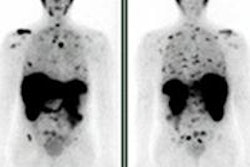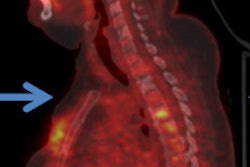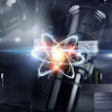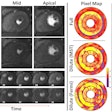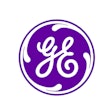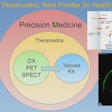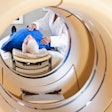The average age of gamma cameras at nuclear cardiology labs in the U.S. grew by two years between 2009 and 2011, according to a survey from the University of Missouri.
Age increased by two full years, from 6.2 years (± 4.1 years) in 2009 to 8.2 years (± 5.1 years) in 2011, the researchers found. They believe that economics is having an increasingly influential role in whether a facility can afford to employ the latest imaging technology.
The good news, however, is that approximately 80% of patients undergoing nuclear cardiology exams are imaged with gamma cameras that are newer than 10 years old.
Reimbursement pressure?
In presenting the findings at this month's Society of Nuclear Medicine and Molecular Imaging (SNMMI) meeting, study co-author Dr. Timothy Bateman, a professor of medicine at the university, cited two reasons for the age disparity.
"One important change was reimbursement decreases, and a second important change was that accreditation was entirely voluntary until the end of 2012. By the end of 2012, if labs were not accredited, they would not be able to image Medicare patients," Bateman explained. "So when we were looking at labs in 2009, many were reaccredited and had applied for accreditation on a voluntary basis. By 2011, we were coming down to an obligatory accreditation."
Which could mean that older cameras were in operation in various nuclear medicine labs around the country, but were not part of the study count until those facilities applied for accreditation in 2011, before the 2012 deadline.
Led by Dr. Harshal Patil, from the university's department of internal medicine, the researchers conducted an electronic search of all applications for accreditation in the database of the Intersocietal Accreditation Commission (IAC) between 2009 and 2011. IAC accredits nuclear cardiology labs in the U.S. on a three-year cycle.
Thus, the three-year time span was chosen to prevent any lab from being counted twice. Entities that included more than one nuclear cardiology lab had their facilities combined, as if they were one site of service.
Imaging volume
A total of 1,993 labs were included in the study, representing 80% of all IAC-accredited nuclear cardiology labs. These facilities had 3,730 gamma cameras, for an average of 1.9 cameras per lab. The total number of patients imaged by these labs was approximately 3.4 million.
To categorize use of the imaging equipment by age, Patil and colleagues used four five-year categories. They found 1,349 cameras newer than 5 years old in operation, 1,610 cameras between 6 and 10 years old, 660 cameras between 11 and 20 years old, and 111 cameras older than 20 years.
In total, 79% of cameras tallied in the study were 10 years old or newer. The use of newer cameras would seem to be good news for patients: 2.8 million people (82%) were imaged at the nuclear cardiology labs using cameras in this age group.
"The average camera age was 7.7 years, plus or minus 4.8 years, with 36% of labs having cameras less than 5 years old and 43% of labs reporting cameras between 6 and 10 years old," Bateman said.
| No. of patients imaged according to camera age | ||
| Gamma camera age | No. of patients | Percent of total |
| Less than 5 years | 1.36 million | 40% |
| 5-10 years | 1.44 million | 42% |
| 11-20 years | 524,868 | 15% |
| More than 20 years | 89,309 | 3% |
| Total | 3.4 million | 100% |
| No. of gamma cameras in use according to age | ||
| Gamma camera age | No. of cameras | Percent of total |
| Less than 5 years | 1,349 | 36% |
| 5-10 years | 1,610 | 43% |
| 11-20 years | 660 | 18% |
| More than 20 years | 111 | 3% |
| Total | 3,730 | 100% |
Nuclear cardiology labs with newer camera technology were generally larger facilities compared to imaging centers with older cameras.
"Larger-volume labs tend to be using newer cameras, and there is a small yet statistically significant trend for labs that received delayed accreditation status to be using older cameras," Bateman said.
During the three-year study period, IAC received 666 new applications (33%) for nuclear cardiology accreditation and 1,327 applications (67%) for reaccreditation. After reviewing the submissions, IAC awarded accreditation to 939 labs (47%), while the remainder had their accreditation applications delayed (53%).
Facilities that received accreditation operated gamma cameras with an average age of 6.3 years, while labs with delayed accreditation had an average camera age of 6.9 years.
Based on the results, Bateman said there are several issues that warrant further study. These include whether camera age is a reflection of lab quality, current economic realities, or differences between labs that sought accreditation voluntarily compared to labs that did so under pressure, he added.
Study disclosures
The study was supported by a research grant from the Intersocietal Commission for the Accreditation of Nuclear Medicine Laboratories (ICANL).





